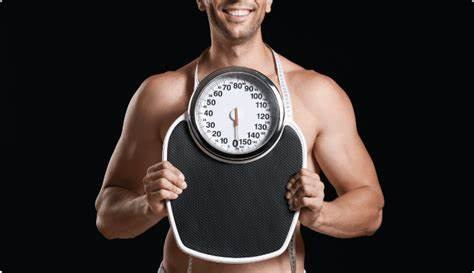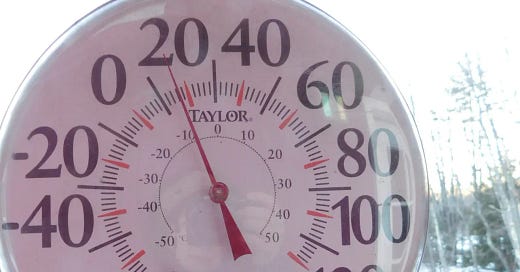This is a continuation of the last post all about how I lost 20 lbs, roughly 12% of my body weight, in six months. During this time, I got my body down to the lowest body fat percentage I'd ever been at in my life.
As mentioned in that post, I had a mild surgery on my leg. This was not due to any sort of soft tissue injury on anything of this sort. However, being weighed just prior when on an empty stomach was kinda shocking really. Well, not really but it was low enough that I figured it was about time I start to put some weight back on my body. But, I was not going to do so with reckless abandon.
To backtrack a little, during my childhood, and into my early twenties, I was a soda drinking fiend. In fact, I just looked up the nutrition info on my soft drink of choice and it contains nearly 30 grams of added sugar per cup. And I used to drink at least two tall glasses of this stuff per day until I was 21 years old...! This was on top of the cereal I would have every night that I sprinkled sugar on, and the otherwise mildly carbohydrate focused meals I would devour. With all this, I was still somewhat slender, albeit, regularly sized pants were always difficult for me to fit into.
From all these years of eating and drinking in this manner, there has been a little extra body fat that I had stored in some predictable areas. The majority of which had been depleted when I lost those 20 lbs. So when I set out to put some weight back on, I did so with the intention to not only gain muscle mass but to also minimize the amount of weight gain in the form of body fat. These were the constraints I set for myself to execute.
The way I attacked this was two fold. First and foremost, I kept in mind the principles of a proper macronutrient balance that I discussed in the previous weight loss post. Particularly the bit about carbohydrates and salt being hygroscopic and carbs often leading to increase in body fat levels due to excess levels being stored as fat. Also, the bit about protein repairing every cell in your body including muscle cells. Secondly, I had to pay attention to my work load when weight training for the goal was to put on muscle mass of course.
And how did this manifest into an actionable plan you may ask? Well I went into a mild caloric surplus to the tune of roughly 10%. As I did with my weight loss caloric deficit, this 10% surplus was arrived at slowly over time, not overnight. Specifically, I chose to go by the old rule of thumb that you may have heard weight trainers use in the past. For muscle growth (from weight lifting) consume 1 gram of protein per 1 pound of body weight...per day. Because my estimation by eye techniques have been well honed over the years, this was fairly easy to do. For those reading that are not as keen, 8 oz of meat, fish, poultry per day would yield about 50 g of protein. One cup of dairy, ~12g of protein. One ounce of nuts or seeds, maybe 5 grams of protein. This can help give you an idea. And to be fair, in the beginning, I did have to refresh my eyes by weighing some food.
Another aspect of this 10% caloric bump was to increase the amount of nuts and seeds I was consuming by at least 50%. Carb-wise, initially I kept them roughly the same, however, the closer I came to my intended target, I did cut them down by 50% to really hone in on minimizing the body fat production.
Overall, a genuine 10% increase is what my body needs to maintain a steady weight gain. Again, mostly by an increase in calories from protein, and to a lesser extent calories from quality dietary fats.
Once a week I was still eating my face off, this has never changed.


Now, another large component to gaining lean muscle was by increasing my fitness workload. Specifically, my aerobic workload stayed the same. This meant the same amount of time was spent kickboxing, cycling, and playing soccer. Rather, it was my efforts in the weight room that really saw a change. This is where the increased workload came in. By this I mean I increased my top set weight to the tune of, you guessed it, 10%. I like the kiss method (keep it simple stupid) for anything more would be asking for trouble. Why? Well, even though this is something I eased up on over time (just like my caloric surplus), it was intended to be a short period of time. So, going up 15%+ would be asking my body to do things my joints and muscles would not appreciate on such short order. Even going on a 10% jump at an instant on things like squats for weight when you're already on the edge of it can be disastrous. So being sensible is the way...steady as she goes.
Okay, so not every single lift was increased by 10%. Some I was able to handle a bit more safely. Some others I was able only to handle a little less. But on average it is a genuine 10%+ increase in working load. Ideally from first to the last set of each squat, deadlift, power clean, pullup, etc, session.
Another important key factor to gaining this weight was to make a large effort to not skip weight lifting fitness days. Generally, I like to clock in 4-6 hours per week of exercise. Prior to this period of time, I was consistently only getting in 4 hours a week. This meant I was missing about one weight lifting session per week that I normally would not miss. Accordingly, I made it a point to be less lazy and make sure I get three solid lifting sessions per week.
With all of this combined, I was not perfect. But, let's say I was 90% on the ball. And over time, sure enough, I started to put weight on in a fairly linear fashion. As in there were no spikes, or jumps in my weight gain. This was also thanks to me keeping my foot on the gas as it were during the warmer months when I traditionally dislike gaining weight. This was made possible by my macronutrient balance mentioned above. Since carbohydrates were kept at a minimum with respect to my protein and dietary fat intake I was able to gain muscle mass sans water weight. This combined with some clever self lymphatic massage techniques I learned about which I will save for a future post.
If this sort of method of weight gain is of interest to you, keep in mind that you will have to become somewhat vain during the process. For me to get this to work I made it a point to look at myself front and back in the mirror everyday to make sure my body was not adding on any body fat in some funky places. Even multiple times a day since certain macronutrients are best consumed at different parts of the day, not so much evenly spread out.
And that's it really. At the one year mark I was 10 lbs up. At the two year mark I was 20 lbs up. I weighed myself once a week to make sure I was on track. I monitored my physique (shirtless) in the mirror to make sure it was all going into the places it should. As I see the human body as a biological machine it was never this thing of anything close to stroking my ego. These were two methods used to simply monitor my progress. And it worked. Now some of my old clothes don't fit as well but they will be replaced.
Most importantly, these methods I've detailed have allowed me to add on weight with minimal body fat gain. I don't have veins popping out of my torso any longer but who cares cause that was kinda weird. I'm at a healthier weight with a much improved body fat composition.
I'll leave you with reiterating a statement I made earlier. Your body is a biological machine. If you see it as such, you can detach your own psychology of self image from this process. All too often, the media plays on the consumer's psychology to get them to buy into whatever they are selling. I'm just as human as everyone else on the planet. Therefore, the methods I've described in this post and the previous one WILL allow you to yield similar results. And if you can see things this way, your expectations will be realistic. Only at the end of a weight gain, or weight loss, journey will you be able to determine if these expectations were surprising to you. And I'll bet it will be a good surprise.


To help grow this newsletter please Like, Comment, Share, and Subscribe.
To help support this newsletter, consider purchasing a Subscription.




